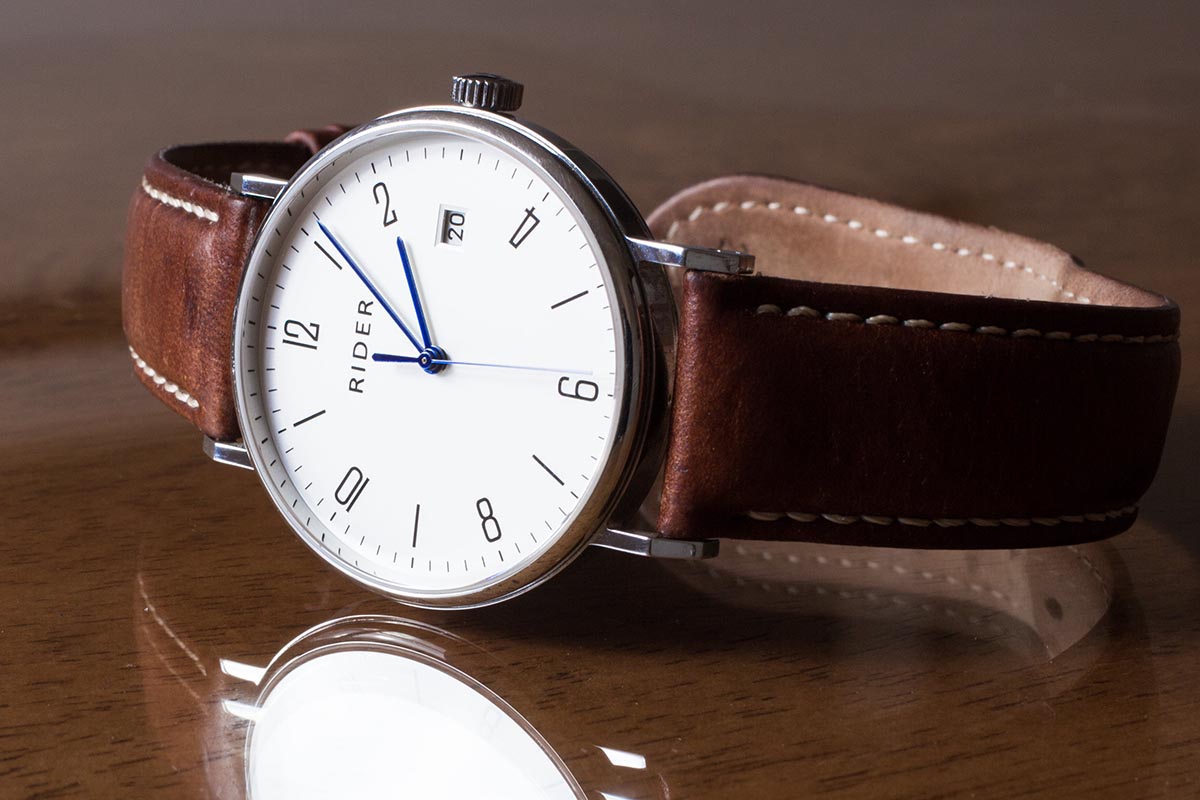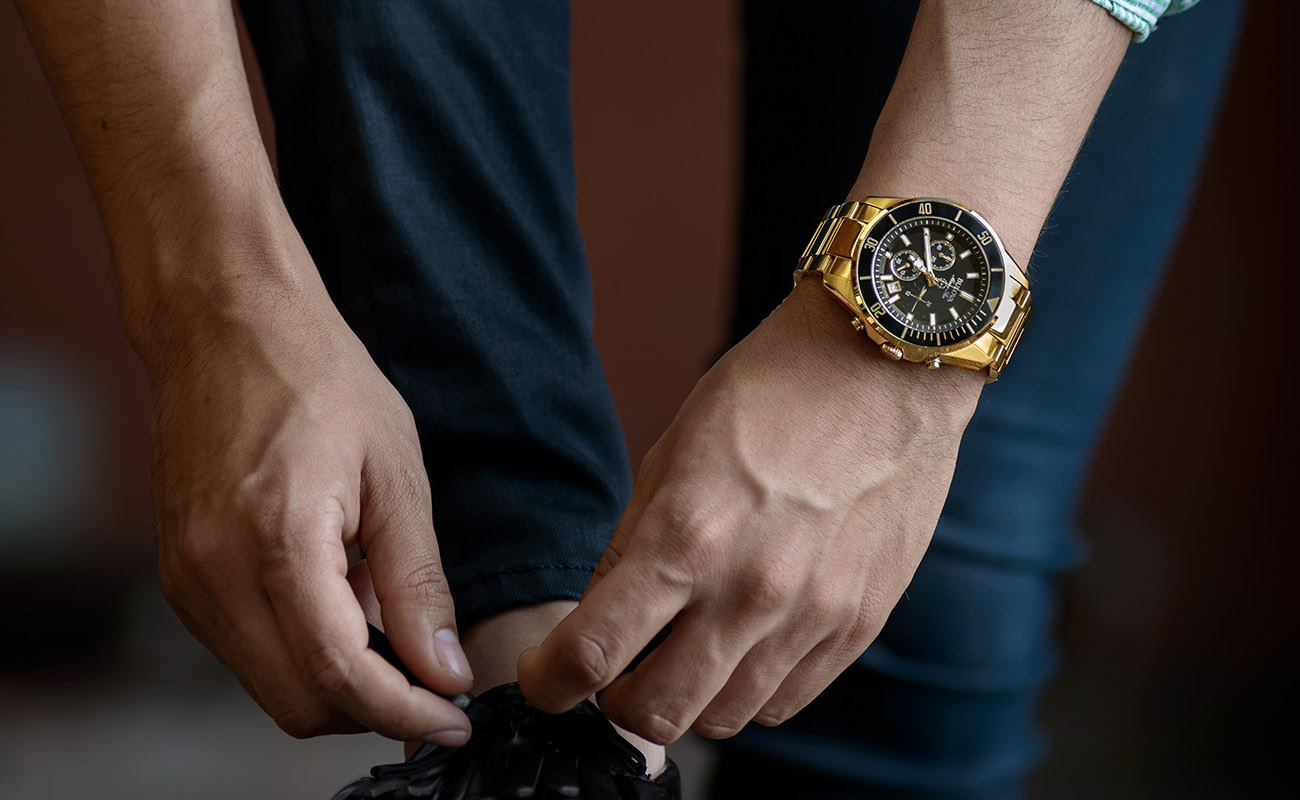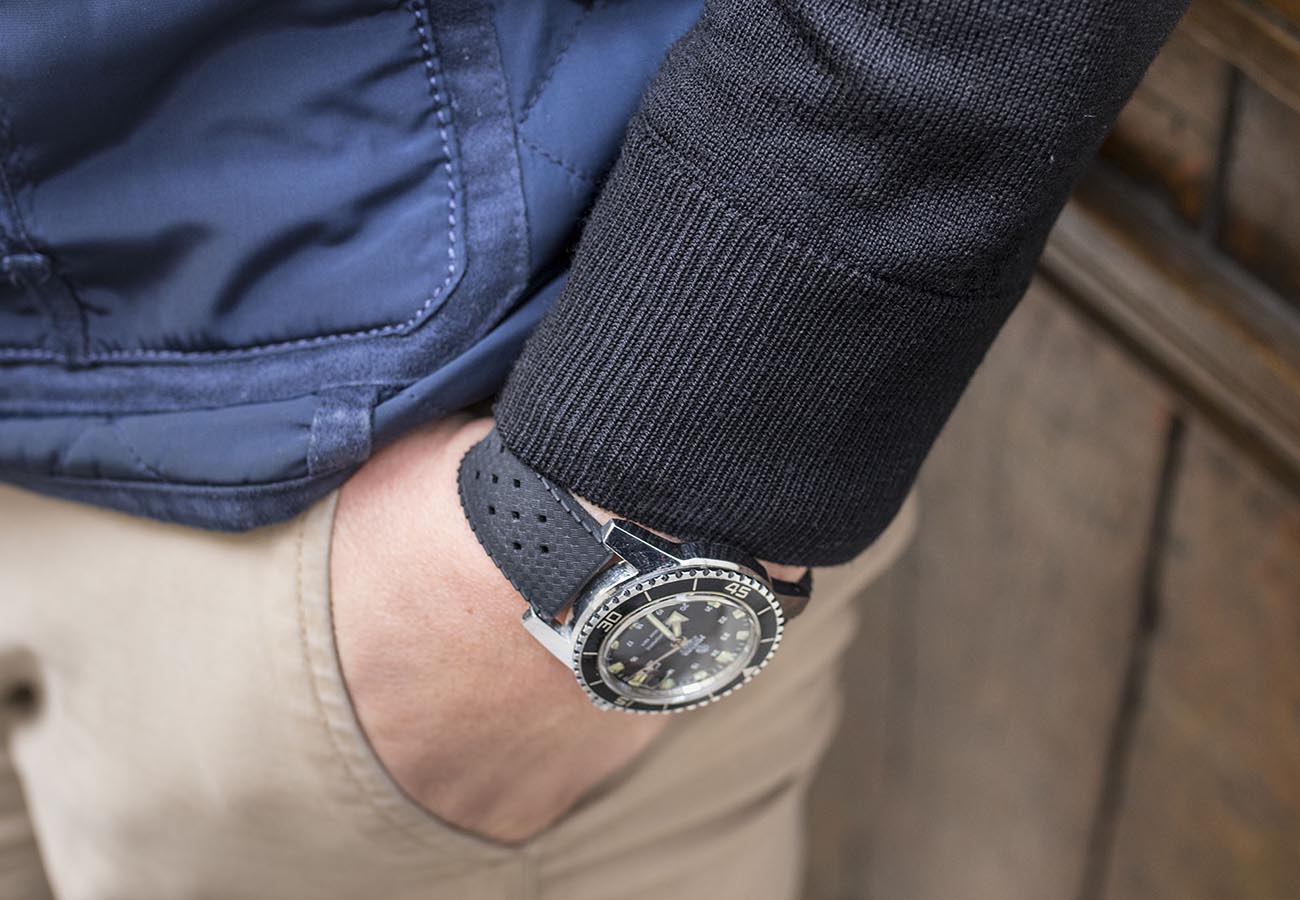The Complete Guide To Watch Strap Types
Sure, watches are practical. They tell the time at the flick of a wrist. But so does your phone. What makes a watch a timeless accessory for men? They are the embodiment of function meets fashion. With countless watch strap types to choose from, your statement piece can make a new statement without much effort. Are you looking to change up your daily accessory? Keep reading to learn all the strap types you will encounter as you hunt for the perfect one.
The Multitude of Watch Strap Types
Buying a new strap is considerably cheaper than buying a new watch. The strap is also much more visible than the face. If you want a cost-effective way to expand options, a new strap is always the best move. There are a ton of great options out there for a new watch strap. The following list covers the broad categories of watch band styles so that you can begin your search well-informed. There are a lot of styles of watch straps. Knowing some of the lingoes will help you while you’re shopping. Plus, the history of each watch strap type is pretty interesting.
Classic Leather
A plain leather strap is a classic. You can’t go wrong with one. It is the most common choice. Its classic design makes it easy to dress up or down. Like any other leather product, your watch band will need some care. It doesn’t do well in wet conditions or extreme temperatures.
Looking for something slightly more unique than a plain leather strap? Look for one of the watch strap types with contrast stitching. The contrast of colors between the leather and the stitch is high impact. Feeling really dangerous? Check out a black leather strap with bold white stitching. Some leather strap options boast a double ridge. The ridge effect is created by adding additional padding under the leather. Try a double ridge leather strap with a square-faced watch for a sportier look.
Rally
Inspired by racing gloves, a rally band is the perfect casual band for the summer because it is breathable. The three perforations below the lugs easily recognize the band. Perforation of metals to reduce weight and thereby increase speed is typical of the racing world. So naturally, it carried over to driving gloves and, eventually, watches.
The perforations increase ventilation, reduce material, and keep the band nice and light on your wrist. It moves better against the skin with a couple of cut-outs. If you’re into that old-school aesthetic, there’s no better strap for a vintage timepiece.
NATO
The was originally designed for British soldiers in the 1970s. Strictly military for a while, the straps were sold to civilians when the Cold War ended. You could pick one up at a military surplus store. They stamped a unique NATO Surplus Number onto each strap.
When the originals ran out, watch band manufacturers started replicating NATO straps. The NATO is a nylon band with a simple slip-through design. The band is a single-piece construction that is attached to the watch face by weaving the band underneath the spring bars.
Typically, this style features a keeper strap that keeps the watch case firmly on your wrist, even if a spring bar snaps. It’s an excellent choice for a smaller watch face, as the nylon material is generally thin. Overall, it’s a versatile option for any casual outing.
Zulu
Love NATO but need something a little heftier? Check out a Zulu strap. The Zulu are the first cousin of the NATO. Another casual option is that this band is thicker than the NATO and made of either nylon or leather. It has stainless steel details. While the NATO is great for smaller watch faces, the Zulu excels with a larger watch.
The Zulu is a two-piece construction. The thicker material means it cannot weave underneath the spring bars like the NATO. The Zulu’s thicker material will take longer to break-in, but it will also last much longer than the NATO band. Originally trademarked by Maratac, Zulu straps have no obvious reason for the name.
Link
The Link strap is also known as a bracelet strap. This is a more formal design. You can find Link straps in everything from gold to titanium to wood. Not only does it come in a bunch of materials, but it also comes in many Link variations. Here are the big four Link styles:
1. Oyster Link
The Oyster is the most popular of the Link straps. Rolex introduced the Oyster back in the 1930s, and it became an instant classic. The band is three links across, with a thick center link. The wide center link makes the strap very strong – less prone to breaking or stretching. It also makes the strap feel stiff in comparison to other link straps. The chunkiness of the strap is a good proportion for a large watch, but it also provides an interesting contrast to a smaller face.
2. President Link
The President band is often associated with President Dwight D. Eisenhower. Rolex gifted President Eisenhower its 150,000th timepiece in 1956. The band on the gifted watch became known as the President band. It is similar to the Oyster in that it is three links wide, but the similarity stops there.
The links on the President are much shorter. This makes the band less stiff but also increases the number of places that could break on the band. The lack of durability has moved the President into the formal band category. You might notice a small amount of stretching after extensive wear, but this depends entirely on the quality of the strap, not its link construction.
3. Jubilee Link
Rolex designed the gold Jubilee strap in honor of the company’s 40th anniversary. It now comes in a variety of metal options. The Jubilee showcases five links across – three narrow links in between two thick, matte-finished side links. The Jubilee is often found in two-toned options to give it a little extra style. Like the President, the links in the Jubilee are shorter, so there are more of them in the band. The smaller links reduce structural integrity.
4. Engineer Link
The Engineer is the chunkiest of the Link straps. The strap is five links across in width. The links are often cut in a pseudo-hexagonal pattern, which gives them a very angular appearance. This dense strap is much heavier than other straps.
The Engineer is a perfect match for dive watches. The heftiness of the watch strap is matched by its durability. It’s an excellent choice for a watch wearer who takes a toll on his timepiece. Don’t be daunted by the size of the Engineer. Make sure you match the strap to the watch face.
Aviator
Aviator straps were designed to be worn over pilots’ jackets in World War II, so they’re a little bit longer than normal straps. They are usually made out of leather, featuring large rivets below the lugs. Pair it with a pilot watch face for a true classic.
Bund
The Bund strap was invented for German World War II pilots who demanded a watch that would not burn them in a crash. Here’s the theory: If you survived a plane crash, you’d have to deal with the fireball your plane was sure to become. A metal watch in direct contact with skin would melt your skin as it heated up in the fire.
Enter the Bund. The Bund is constructed with extra padding behind the watch face. This prevents the watch from becoming a hazard as you try to escape your burning plane. There are holes in the origin story of the Bund, but it makes for a great dinner conversation. The extra padding behind the watch face keeps cold metal off your skin in the winter, provides protection if you have skin sensitivities to metal, and keeps perspiration away from your watch face. Aesthetically, it’s a no-brainer. But small-wrist people, beware. It may dwarf your wrist.
Tropic
The Tropic band is the original rubber watch band. It was developed in the 1960s as an alternative to metal sport bands. It quickly became a hit among the diving community. It is lightweight and inexpensive to replace if it breaks.
The Tropic has a unique texture and is identifiable by its basket weave pattern stamped into the rubber. The slim profile and extreme durability of the Tropic make it a must. If you buy one today, you’ll likely still wear it for years.
Perlon
If you like the Tropic, take a peek at a Perlon strap. The Perlon is another design from the 60s showcasing a basket weave pattern. Instead of stamping it into the rubber, the Perlon is actually woven nylon. The weave of a Perlon gives it a cool textural component. Plus, there are no holes cut into the strap. The buckle’s prong can go through any opening in the weave.
It’s breathable and dries quickly, so it’s a good choice for a sports watch. Unfortunately, Perlon straps were invented in Europe and remain a mostly European fashion. You may have to check out these out online rather than in a store.
Shark Mesh
How do you not want to own a Shark Mesh band? It’s a great name. That said, the band has almost nothing to do with sharks. The name comes from a dive watch ad campaign, which claimed it was “shark-proof”. Unlikely, but still, it is a very durable design. The strap is made of loosely interlocking loops, like chainmail. The strap is rugged, with few breaking points. It’s also breathable and flexible.
Milanese
The Milanese strap is another mesh watch strap type. As the name implies, Milanese straps were developed in Milan. The strap comes from a design for a 13th-century chainmail. These are considered a vintage option. They were extremely popular from the 20s to the 60s when production began to taper. The strap is distinguished from the Shark Mesh by a densely woven mesh construction that provides a smooth metal appearance.
Function Meets Fashion 
Timepieces are a classic on gentlemen. Picking a watch that matches your personality for years is a difficult task. That’s why changing out the strap is always a good option to keep in mind. You can upgrade your style and keep that wardrobe sharp without spending too much money on a new watch. Now that you understand all the watch strap types get out there and hunt down your perfect band. Find this guide helpful. Like and follow us on Facebook, and check out more of our guides!



















